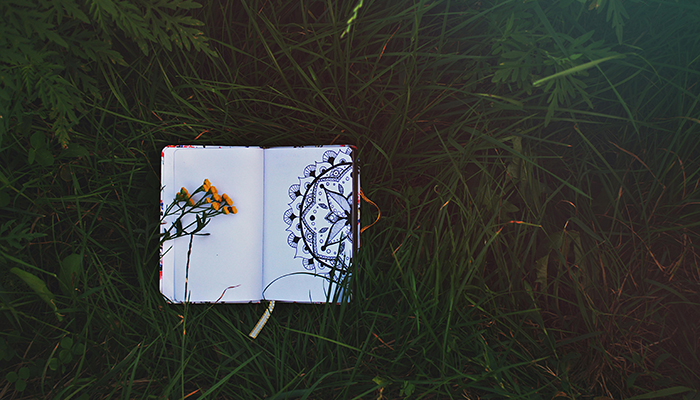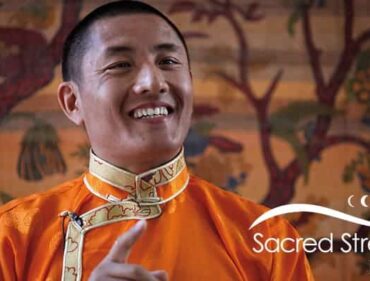Article: Buddhism and Psychedelics: Two Paths to the Same Truth
By Isa Gucciardi, Ph.D.
Editors’ Note: Dr. Isa Gucciardi is a psychotherapist and shamanic practitioner whose work integrates depth psychology, transpersonal healing, and indigenous wisdom traditions. She is the founder of the Foundation of the Sacred Stream and has written extensively on the intersection of modern psychology and ancient healing practices.
The intersection of Buddhism and psychedelics is a meeting point between two profound modalities of exploring the nature of reality. Though they arise from different traditions, these approaches both aim at unveiling deeper truths about the self, the mind, and the universe. By examining this intersection, we can uncover a rich dialogue between ancient wisdom and contemporary experiences.
Buddhist Foundations in Understanding Reality
Buddhism provides a systematic framework for understanding suffering and the means to transcend it. The teachings of the Four Noble Truths and the Eightfold Path offer a guide to liberation from dukkha, the unsatisfactoriness inherent in existence. Through meditation and ethical living, practitioners aim to cultivate wisdom, compassion, and an experiential understanding of impermanence and interdependence.
Central to Buddhist philosophy is the concept of emptiness (shunyata), which posits that phenomena lack inherent existence. This does not suggest that things do not exist, but rather that their existence is contingent upon causes, conditions, and perspectives. It is a profound realization that dissolves dualities, opening the practitioner to a deeper sense of connection with all that is.
The practice of meditation provides a deliberate and disciplined approach to these insights. Over time, practitioners stabilize their minds and cultivate clarity, creating the conditions for transformative experiences. However, this path requires dedication and patience—a gradual unfolding of understanding.
The Psychedelic Pathway to Insight
Psychedelics, on the other hand, often thrust individuals into these states of interconnectedness and transcendence with astonishing speed. Substances like psilocybin and LSD can dissolve the ego, dismantling the boundaries of self and other. Users frequently report feelings of profound unity, unconditional love, and even glimpses of what could be called the “divine.” These states are strikingly similar to those described by Buddhist practitioners in moments of deep meditation or enlightenment.
I recall one individual who, during a psilocybin journey, encountered what he described as “the clear light of wisdom.” The description echoed the Tibetan Buddhist concept of Buddha Nature—the innate clarity and compassion at the heart of all beings. However, after the effects of the substance faded, he struggled to integrate the experience into his daily life. This underscores a critical distinction between these two paths: while psychedelics can provide a glimpse of profound truth, they do not inherently offer the tools to embody or sustain it.
A Complementary Dialogue
Buddhism and psychedelics are not inherently opposed but can complement one another when approached with respect and care. Psychedelics can serve as a catalyst, breaking down rigid mental structures and offering a visceral experience of Buddhist principles such as interdependence and impermanence. Buddhism, in turn, provides a framework to understand and integrate these insights, ensuring they lead to lasting transformation rather than fleeting euphoria or confusion.
One of the most compelling areas of overlap is the phenomenon of ego dissolution, which is commonly reported in psychedelic experiences and is a central goal in Buddhist practice. Ego dissolution involves a loosening—or even complete disappearance—of the sense of a separate self. For a meditator, this might occur after years of disciplined practice. For a psychedelic user, it might happen within an hour of ingesting a substance. Yet, while the psychedelic experience can catalyze this state, it does not necessarily teach the user how to navigate or sustain it.
In my work with individuals exploring the intersection of these modalities, I have often seen the transformative potential of combining the two. One participant, a seasoned meditator, described her first ayahuasca ceremony as “a reunion with everything I had been meditating toward, but had never fully grasped.” However, she emphasized that without her meditation practice, the intensity of the experience might have overwhelmed her.
Integration and Responsibility
For those considering this intersection, preparation and integration are essential. Psychedelics are not a shortcut to enlightenment, nor are they inherently transformative. Without careful intention, they can lead to disorientation or even exacerbate suffering. The grounding practices of Buddhism—meditation, mindfulness, and ethical conduct—offer the tools to ensure that the insights gained from psychedelics are deeply understood and woven into the fabric of everyday life.
Moreover, it is crucial to approach psychedelics with respect for their cultural and historical roots. Many of these substances have been used for millennia in shamanic and spiritual traditions, and their use carries a responsibility to honor those lineages.
Conclusion
The intersection of Buddhism and psychedelics is not without challenges, but it holds immense potential for those willing to navigate it with care. Psychedelics can provide a glimpse of the truths that Buddhism has articulated for millennia, while Buddhism offers the tools to stabilize and embody those truths. Together, they form a dynamic partnership—a bridge between ancient wisdom and modern exploration, leading us toward a deeper understanding of ourselves and the nature of reality.
By engaging with both paths thoughtfully, we honor the wisdom they each carry and unlock the potential for profound transformation.




